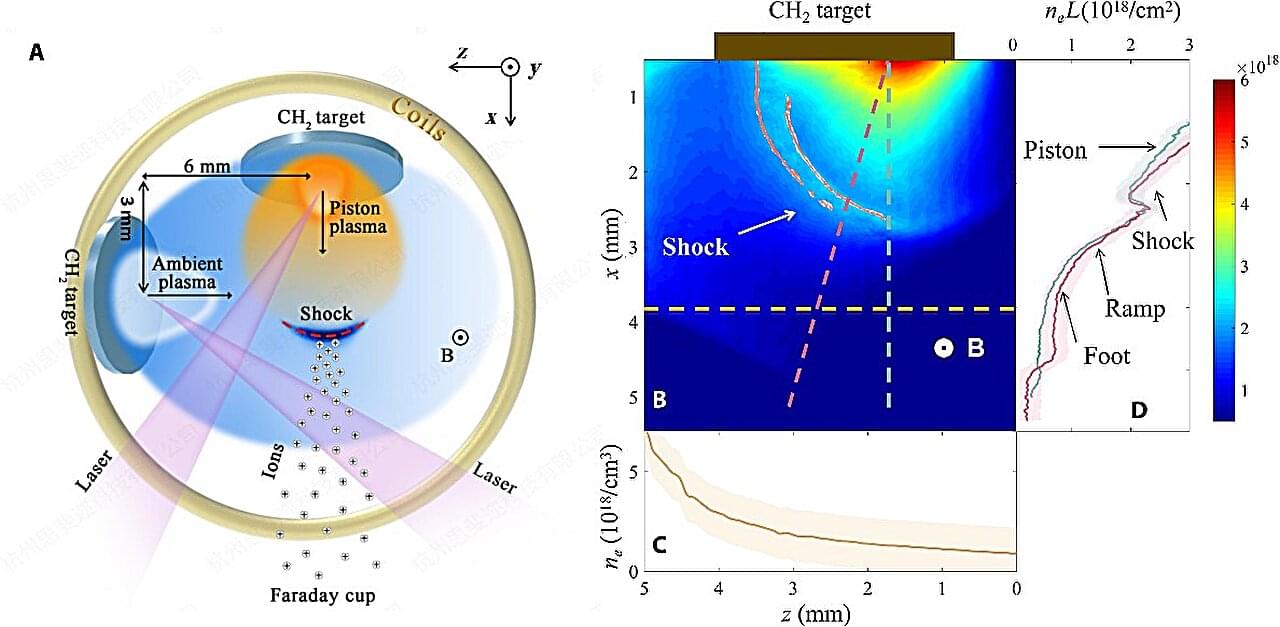Researchers from the University of Science and Technology of China (USTC) achieved the first direct laboratory observation of ion acceleration through reflection off laser-generated magnetized collisionless shocks. This observation demonstrates how ions gain energy by bouncing off supercritical shocks, central to the Fermi acceleration mechanism. The research is published in Science Advances.
Collisionless shocks are cosmic powerhouses responsible for accelerating charged particles to extreme energies. This acceleration involves particles repeatedly crossing shock fronts, gaining energy incrementally. However, how do particles initially gain enough energy to enter this cycle? Two competing theories, shock drift acceleration (SDA) and shock surfing acceleration (SSA), have emerged, but observational limitations in space and previous lab experiments have left the question unresolved.
This new experiment, conducted at China’s Shenguang-II laser facility, recreated a controlled astrophysical shock scenario. Researchers used high-energy lasers to generate a magnetized ambient plasma and a supersonic “piston” plasma. When the piston collided with the ambient plasma at speeds exceeding 400 km/s, it produced a supercritical quasi-perpendicular shock, similar to those observed near Earth.
